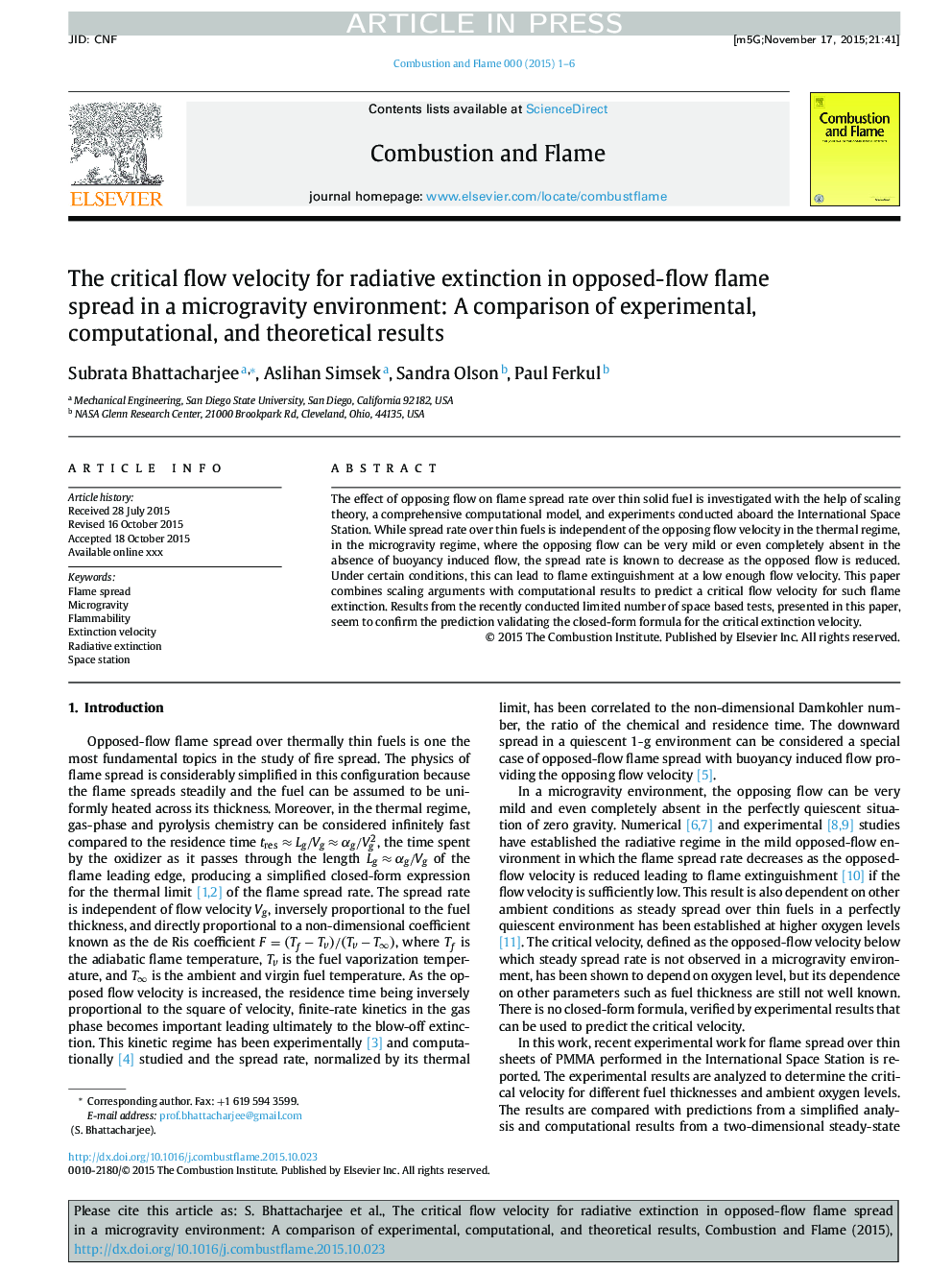| کد مقاله | کد نشریه | سال انتشار | مقاله انگلیسی | نسخه تمام متن |
|---|---|---|---|---|
| 6594376 | 458011 | 2016 | 6 صفحه PDF | دانلود رایگان |
عنوان انگلیسی مقاله ISI
The critical flow velocity for radiative extinction in opposed-flow flame spread in a microgravity environment: A comparison of experimental, computational, and theoretical results
ترجمه فارسی عنوان
سرعت جریان بحرانی برای انقراض شعاعی در شعاع جریان مخالف در محیط میکرو گرانشی گسترش یافت: مقایسه نتایج تجربی، محاسباتی و نظری
دانلود مقاله + سفارش ترجمه
دانلود مقاله ISI انگلیسی
رایگان برای ایرانیان
کلمات کلیدی
شعله پخش می شود میکروگرامیت، اشتعال پذیری، سرعت انقراض، انقراض شعاعی، ایستگاه فضایی،
ترجمه چکیده
اثر جریان مخالف در میزان پخش شعله در سوخت جامد نان، با کمک تئوری پوسته پوسته شدن، یک مدل جامع محاسباتی و آزمایشات انجام شده در ایستگاه فضایی بین المللی مورد بررسی قرار می گیرد. در حالی که میزان پخش بیش از سوخت های ناز مستقل از سرعت جریان مخالف در رژیم حرارتی است، در رژیم میکرو گرانشی، جایی که جریان غلط در خلال جریان ناشی از شناوری می تواند بسیار ملایم باشد یا حتی کاملا وجود نداشته باشد، سرعت گسترش نیز کاهش می یابد به عنوان جریان مخالف کاهش می یابد. در شرایط خاص، این می تواند منجر به خاموش شدن شعله در سرعت جریان کافی می شود. این مقاله ترکیبی از استدلال های مقیاس بندی با نتایج محاسباتی برای پیش بینی سرعت جریان بحرانی برای چنین انقراض شعله است. نتایج اخیرا انجام آزمایش محدود فضایی که در این مقاله ارائه شده است به نظر می رسد پیش بینی اعتبار فرمول فرم بسته برای سرعت انقراض بحرانی را تایید کند.
موضوعات مرتبط
مهندسی و علوم پایه
مهندسی شیمی
مهندسی شیمی (عمومی)
چکیده انگلیسی
The effect of opposing flow on flame spread rate over thin solid fuel is investigated with the help of scaling theory, a comprehensive computational model, and experiments conducted aboard the International Space Station. While spread rate over thin fuels is independent of the opposing flow velocity in the thermal regime, in the microgravity regime, where the opposing flow can be very mild or even completely absent in the absence of buoyancy induced flow, the spread rate is known to decrease as the opposed flow is reduced. Under certain conditions, this can lead to flame extinguishment at a low enough flow velocity. This paper combines scaling arguments with computational results to predict a critical flow velocity for such flame extinction. Results from the recently conducted limited number of space based tests, presented in this paper, seem to confirm the prediction validating the closed-form formula for the critical extinction velocity.
ناشر
Database: Elsevier - ScienceDirect (ساینس دایرکت)
Journal: Combustion and Flame - Volume 163, January 2016, Pages 472-477
Journal: Combustion and Flame - Volume 163, January 2016, Pages 472-477
نویسندگان
Subrata Bhattacharjee, Aslihan Simsek, Sandra Olson, Paul Ferkul,
